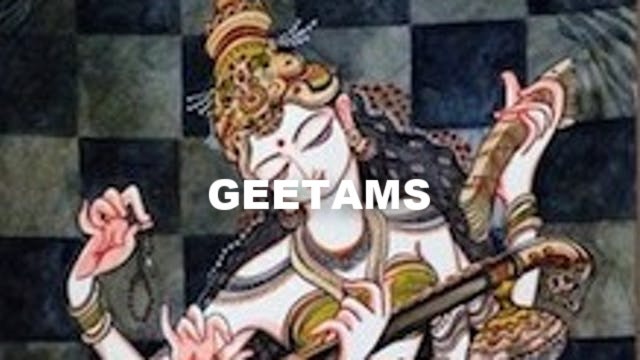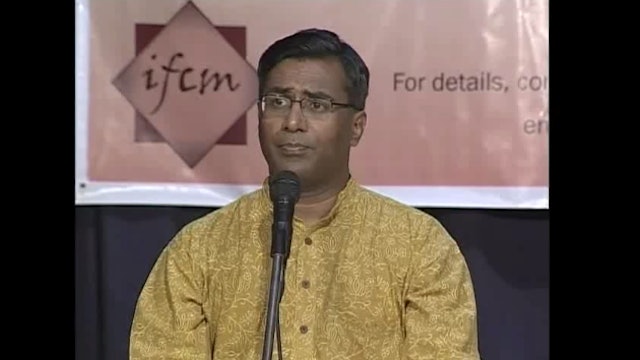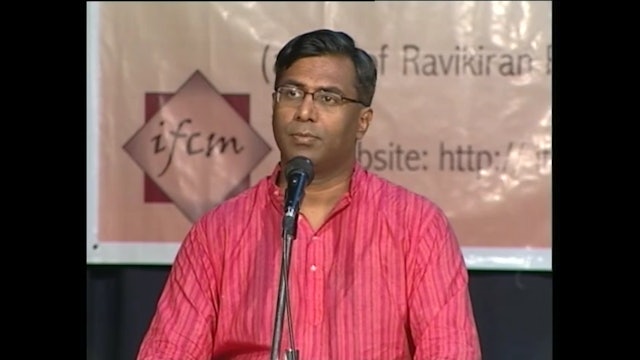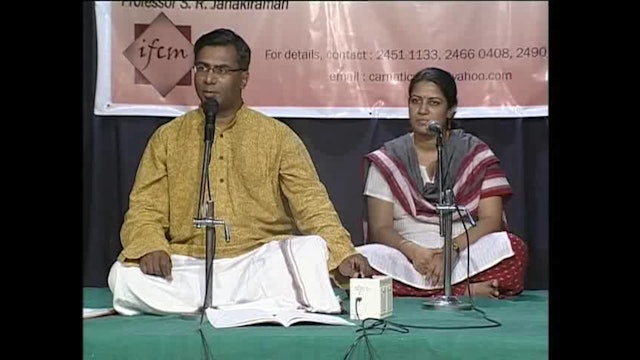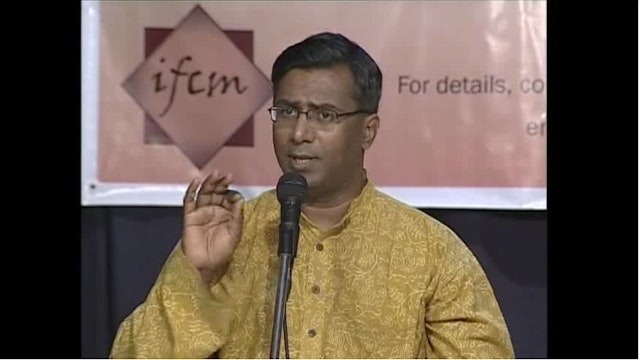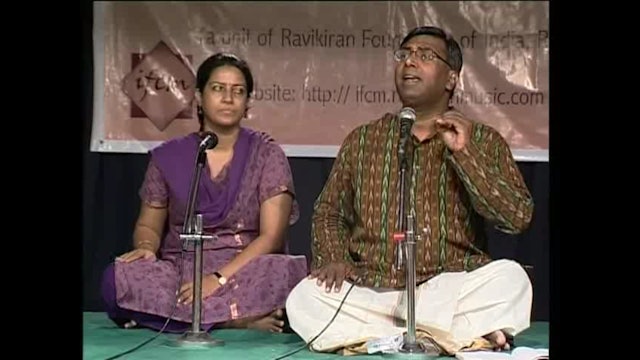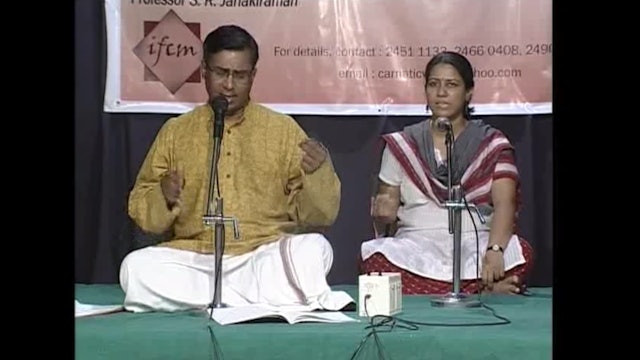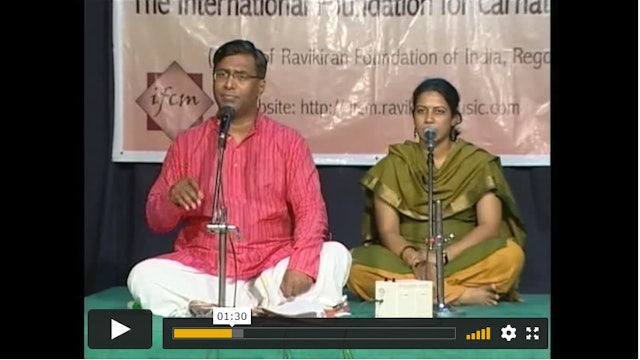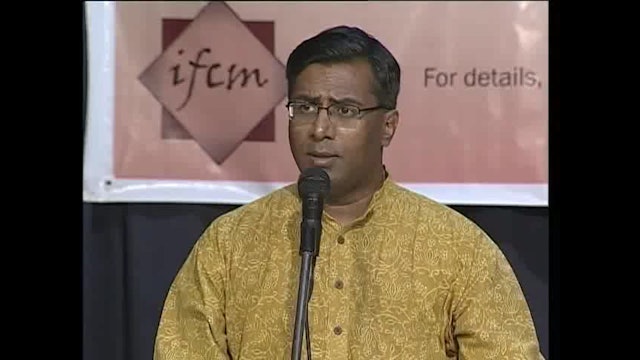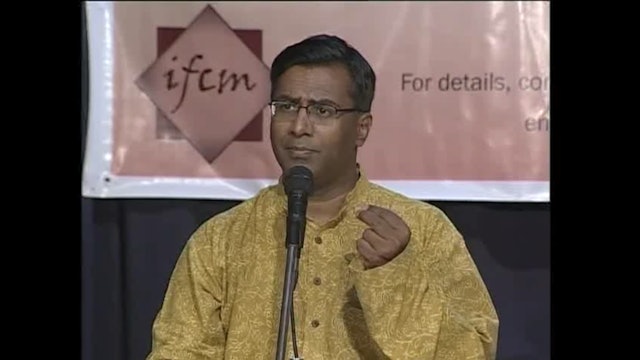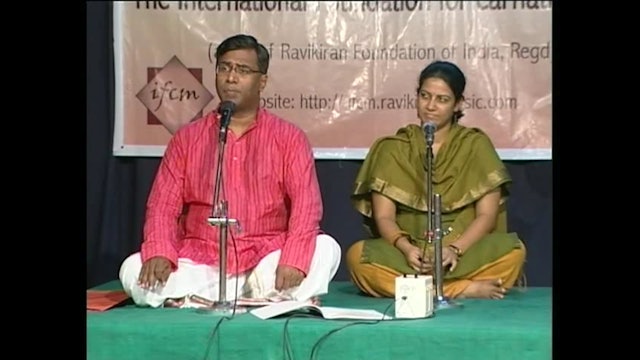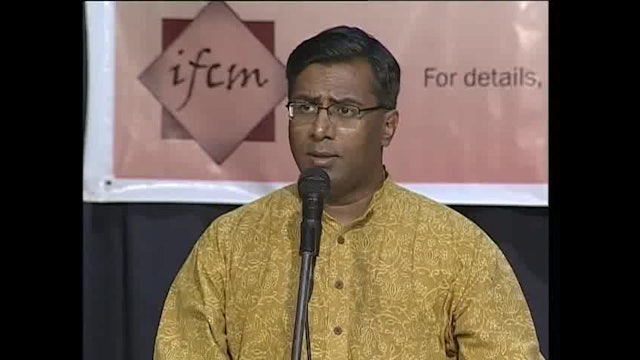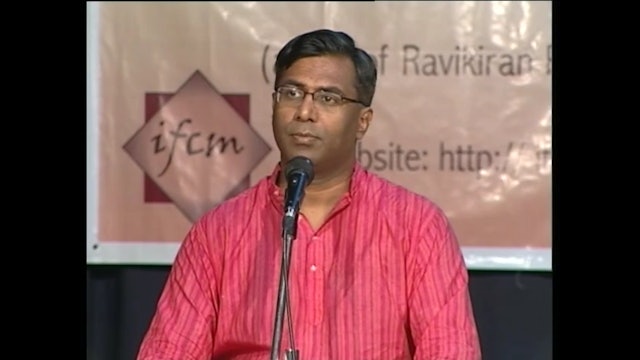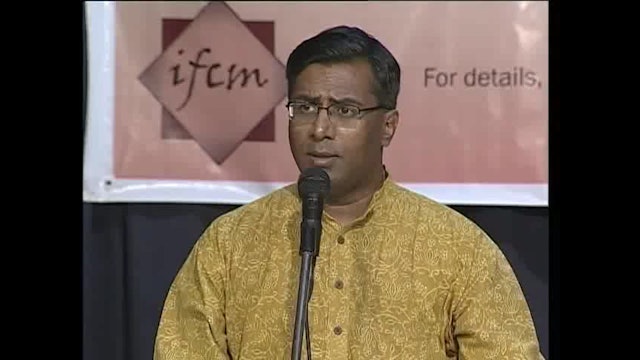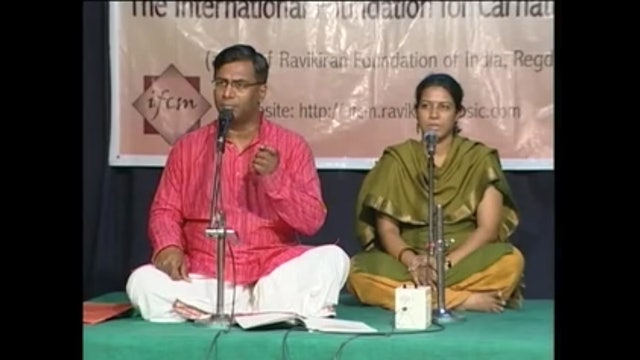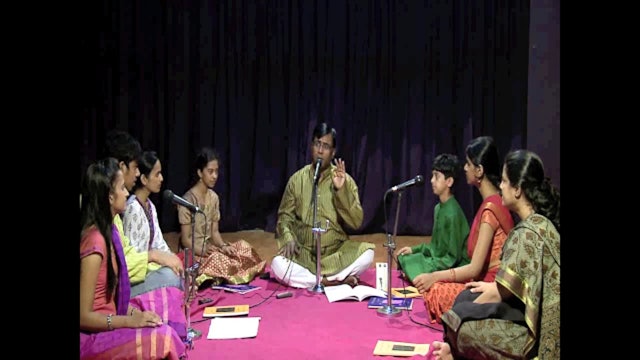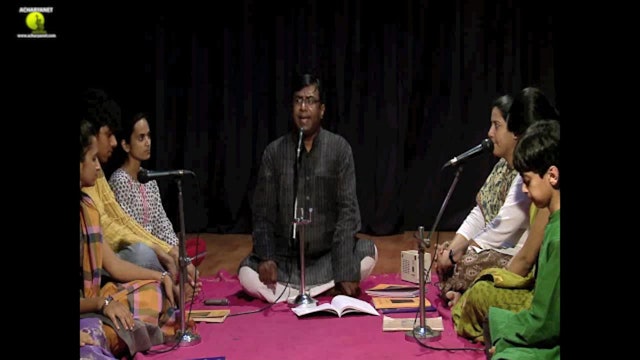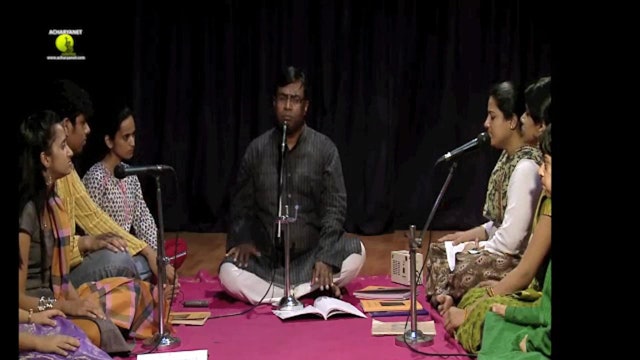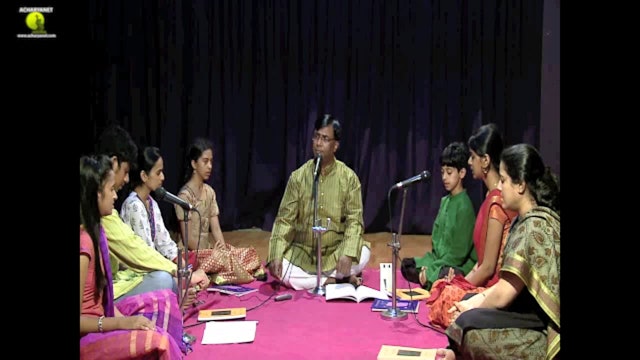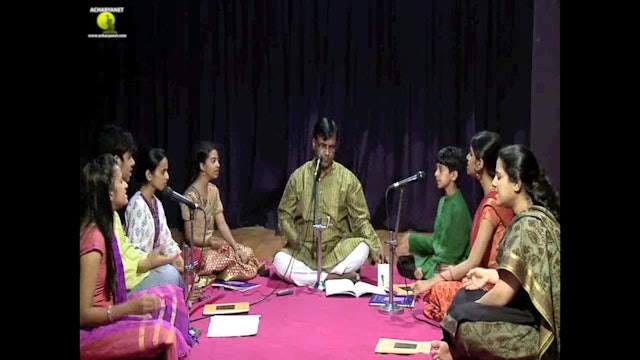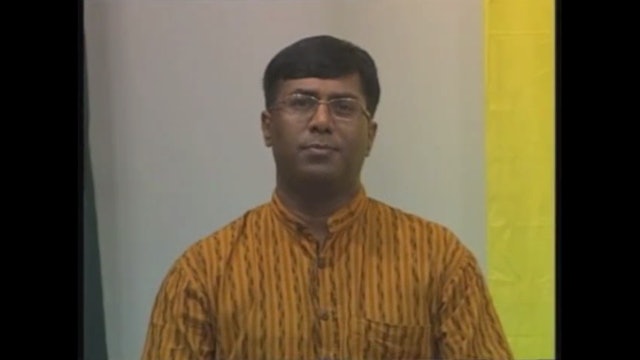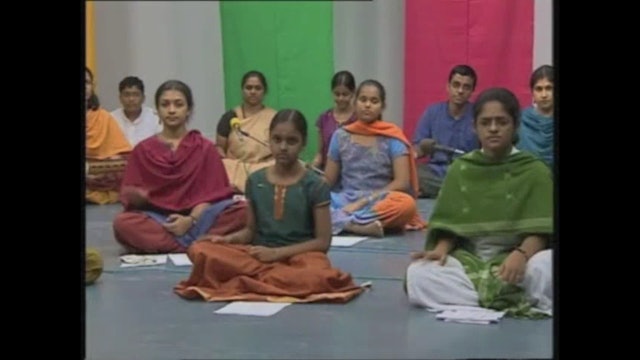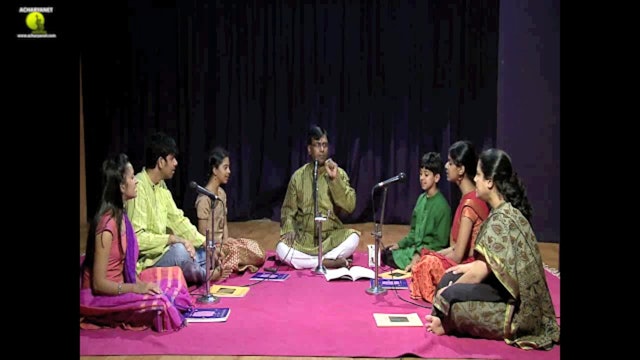Geetams
About Carnatic Geethams
Geethams are the simplest musical form in Carnatic music that introduce students to the synthesis of swara, rhythm and lyrics. This form was first introduced by PurandaraDasa, whose Geethams are popular till date.
How many Geethams are there in Carnatic music?
Broadly speaking, geethams are of two types: –
Samanya Geethams-
Samanya geethams are created using simple lyrical forms and melodies. They do not contain variations or sangathis, and are composed on common talas like Rupakam, Trishratriputa or Adi Tala. Also known as Sadharan geethams, these are generally composed as an adulation towards God, Acharyas or Musical veterans. An example of a Geetham is ŚrīGaṇanātha (Laṃbōdara) which is set in raga Malhari and the lyrics are in Sanksrit. Geethams do not contain any complex lyrical or raga combinations, the flow of music is also quite natural. This natural flow reflects the beauty of the Geetham. Every note of Dhatu has a syllable in the literature.
Lakshana Geethams-
Lakshana geethams are composed to depict the technicality and characteristics of the ragas they are set into. Unlike the Samanya geethams which are adulations towards God or Acharyas, Lakshana geethams are a depiction of the characteristics of the raga itself.
The tradition of imbibing any form of education from the teacher in ancient India was a Kanthasth tradition, that is, it was transferred orally from the Guru to the disciple and there was nomedium of printed texts or scriptures. The disciples were so sharp that they would immediately memorize this knowledge and preserve it for years, again offering it to the next generation orally. At that time, Lakshana geethams were very useful to help students remember the characteristics of the raga they were set into. Music was thus used as a form of imbibing and preserving knowledge. That’s why, the Lakshana geethams are a special class of Geethams in their own right.
Both types of Geethams generally don’t have well defined sections. However, a few have sections similar to Pallavi,Aanupallavi and Charanams. These are referred to as Khandika-s.
Apart from PurnadaraDasa, other composers have also experimented with this form. GurumoorthyShastriwas a prolific music composer of both the forms of Geethams – Samanya and Lakshana. Shyama Shastri has also composed a few simple Geethams; he would often recite these during his daily worship.
Geethams are very simple, but elegant compositions of Carnatic music. Hence, they are ideal for students to master concepts like tunefulness, fidelity to rhythm and breath control; which are key essentials for further development in Carnatic music.
Some well-known Geethams–
ŚrīGaṇanātha (Laṃbōdara) is a Sanskrit Geetham composed in Malhaari raga (Janya of 15th MelaMayamalavagowla) and set in the ChathushrutiJatiRupaka Tala.
Kamala Jaḍala is a Telegu Geethamcomposed in KalyaniRāga 65th MēḷakartaRāga and set in the TisraJatiTriputa Tala
Analekara is composed in ShuddhaSaveri Raga (Janya of 29th MelaSankarabharanam) and set in TisraJatiTriputa Tala.
VaraVīṇāMr̥dupāṇi is a Sanskrit Geetham composed in Mohanam Raga (Janya of 28th MelaHarikambhoji) and set in Rupaka Tala.
-
Kamala sulochani– Anandabhairavi – Geetam
This is a free preview video. To access hundreds of lessons in the premium subscription package, become a member to start learning right away.
Learn the popular Anandabhairavi geetam, Kamalasulochani, set to Ekam in this video lesson taught by Sangeet Samrat Chitravina N Ravikiran. The notation...
-
Shree ramachandra - Bhairavi - Chaturashra Dhruva - Geetam
Learn the Bhairavi geetham, Shree Ramachandra taught by Shri Chitravina N Ravikiran. The notation is provided in the Perfecting Carnatic Music Level 1 e-book.
-
Bhayasamaya – Deshakshi - Triputa - Purandaradasa -Geetam
Learn Purandara Dasa’s beautiful Deshakshi geetham, Bhayasamaya, from Sangita Kalanidhi Shri Chitravina N Ravikiran. The notation is provided in the Perfecting Carnatic Music Level 1 e-book.
-
Rereshreerama - Arabhi - Geetam
Learn the popular Arabhi ragam geetam, Re re shreerama from guru Shri Chitravina N Ravikiran in this video lesson. The notation is provided in the Perfecting Carnatic Music Level 1 e-book.
-
Sarasvati – Begada - Geetam
In this video lesson, learn the Begada raga geetham, Sarasvati taught by guru Shri Chitravina N Ravikiran. The notation is provided in the Perfecting Carnatic Music Level 1 e-book.
-
Shree Ramachandra - Gowla - Roopakam - Geetam
Learn the Gowla raga geetham, Shree ramachandra, a composition of Pydala Gurumurthy Sastri from maestro Shri Chitravina N Ravikiran in this video lesson. The notation is provided in the Perfecting Carnatic Music Level 1 e-book.
-
Shiva neriye - Nagaswaravali - Roopakam - Geetam
Learn the Nagaswaravali raga geetham, Shiva neriye from guru Shri Chitravina N Ravikiran in this video lesson. The notation is provided in the Perfecting Carnatic Music Level 1 e-book.
-
Giridhara mamava – Navaroz – Roopaka - Geetam
Learn the beautiful Navaroz geetham, Giridhara mamava, taught by guru Shri Chitravina N Ravikiran. The notation is provided in the Perfecting Carnatic Music Level 1 e-book.
-
Harihara vinuta – Nattai – Eka Tala - Geetam
Learn the beautiful Nattai geetham, Hariharavinuta from guru Shri Chitravina N Ravikiran in this video lesson. The notation is provided in the Perfecting Carnatic Music Level 1 e-book.
-
Jaya karunasindho – Dhanyasi - Dhruva -Geetam - Pydala Gurumurti Sastri
Learn the majestic Dhanyasi lakshana geetham, Jayakaruna from guru Shri Chitravina N Ravikiran in this video lesson. The notation is provided in the Perfecting Carnatic Music Level 1 e-book.
-
Janaki ramana – Neelambari - Mishrachapu - Geetam - Pydala Gurumurti Sastri
Learn the Neelambari geetham, Janaki ramana from Guru Shri Chitravina N Ravikiran. The notation is provided in the Perfecting Carnatic Music Level 1 e-book.
-
Sarasakshi - Saveri - Mishra Chapu - Geetam
Learn the popular Shyama Sastri Saveri raga geetham, Sarasakshi taught by Sangita Kalanidhi Shri Chitravina N Ravikiran. The notation is provided in the Perfecting Carnatic Music Level 1 e-book.
-
Shree govinda – Shankarabharanam - Chaturashra Matya - Geetham
Learn the grand Shankarabharanam geetham, Shreegovinda from maestro Shri Chitravina N Ravikiran. The notation is provided in the Perfecting Carnatic Music Level 1 e-book.
-
Meenakshi – Shree – Dhruva - Geetham
Learn the Shree geetham, Meenakshi taught by Sangita Kalanidhi Shri Chitravina N Ravikiran. The notation is provided in the Perfecting Carnatic Music Level 1 e-book.
-
Kereyaneeranu - Malahari - Triputa - Purandaradasa - Geetam
Learn the popular Malahari raga geetham, Kerayaneeranu from Sangita Kalanidhi Shri Chitravina N Ravikiran. The notation is provided in the Perfecting Carnatic Music Level 1 e-book.
-
Mandaradhaare – Kambhodhi – Eka - Geetam
Learn the popular Kambhodhi raga geetham, Mandaradhaare from guru Shri Chitravina N Ravikiran. The notation is provided in the Perfecting Carnatic Music Level 1 e-book.
-
Kundagowra - Malahari - Roopaka - Purandaradasa - Geetham
Learn the popular Malahari Ragam Geetham, Kundagowra taught by Sangita Kalanidhi Chitravina N Ravikiran. The notation is provided in the Perfecting Carnatic Music Level 1 e-book.
-
Kamalajaadala- Kalyani - Mishra chapu - Geetam
Learn the popular Kalyani raga geetam, Kamalajadala set to Mishra chapu taught by Sangeet Samrat Chitravina N Ravikiran. The notation is provided in the Perfecting Carnatic Music Level 1 e-book.
-
Aanalekara- Shuddhasaveri - Trishra Triputa - Geetam
Learn the Shuddhasaveri raga geetham, aanalekhara from maestro Shri Chitravina N Ravikiran. The notation is provided in the Perfecting Carnatic Music Level 1 e-book.
-
Lambodara - Malahari - Roopaka - Purandaradasa - Geetam
Learn one of the most popular Malahari geethams, Lambodara from guru Shri Chitravina N Ravikiran in this video lesson. The notation is provided in the Perfecting Carnatic Music Level 1 e-book.
-
Padumanabha- Malahari - Triputa - Purandaradasa - Geetam
Learn the popular Purandara Dasa Malahari raga geetham, Padumanabha taught by guru Shri Chitravina N Ravikiran. The notation is provided in the Perfecting Carnatic Music Level 1 e-book.
-
Shree ganapathiye - Pantuvarali - Adi - Chitravina N Ravikiran
Learn the Pantuvarali lakshana geetham, in Adi tala, a composition of Shri Chitravina N Ravikiran taught by the composer himself. The notation is provided in the Perfecting Carnatic Music Level 1 e-book.
-
Kalaimahale – Hindolam - Chitravina Ravikiran
Learn the beautiful Hindolam geetham, Kalaimahale, a composition of Shri Chitravina N Ravikiran taught by the composer himself. The notation is provided in the Perfecting Carnatic Music Level 1 e-book.
-
Varaveena - Mohanam - Geetam
Learn the popular Mohanam geetham, Varaveena from maestro Shri Chitravina N Ravikiran in this video lesson. The notation is provided in the Perfecting Carnatic Music Level 1 e-book.

